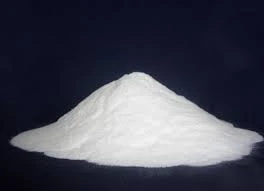Understanding the Role of Additives in Cement Production
Cement is one of the most crucial components in the construction industry, serving as the primary binder in concrete and mortar. The characteristics of cement can be significantly enhanced through the use of various additives. These additives play a pivotal role in improving the performance, workability, and durability of cement, making them integral to modern construction practices.
Types of Additives
Additives can be classified into several categories, including mineral additives, chemical additives, and fibers. Each of these has its unique benefits and applications.
1. Mineral Additives These include materials such as fly ash, slag, and silica fume. Fly ash, a byproduct of coal combustion, enhances the workability and strength of concrete while reducing permeability. Slag, derived from the steel industry, contributes to the durability and resistance of concrete against corrosive environments. Silica fume, which is produced during the production of silicon metal, improves the strength and reduces shrinkage when mixed with cement.
2. Chemical Additives These are substances added to cement to modify its properties or performance. They include plasticizers, superplasticizers, retarders, and accelerators. Plasticizers improve the workability of concrete without the need for additional water, while superplasticizers significantly increase fluidity. Retarders slow down the setting time of cement, which is especially useful in hot weather conditions, while accelerators hasten the curing process.
3. Fibers Fibers made from glass, steel, or synthetic materials can be incorporated into cement to enhance its toughness and fracture resistance. These fibers provide additional support and improve the overall mechanical properties of the concrete, making it ideal for high-stress applications.
Advantages of Using Additives
The incorporation of additives in cement comes with a myriad of advantages.
additive for cement

- Enhanced Workability Additives can improve the flow and handling characteristics of cement mixtures, ensuring a smoother application and reducing labor costs during construction.
- Increased Strength Many additives, particularly mineral and chemical types, are known for contributing to the enhanced compressive strength of final concrete products. This leads to structures that are not only safe but also have a longer service life.
- Durability Additives can significantly improve the durability of cement and concrete against various environmental factors, such as sulfate attack or freeze-thaw cycles. This results in longer-lasting structures that require less maintenance.
- Sustainability The use of industrial byproducts like slag and fly ash as mineral additives helps reduce the carbon footprint of cement production. This aligns with global efforts to promote sustainable construction practices.
Challenges and Considerations
Despite the numerous benefits, the use of additives is not without challenges. The compatibility of various additives can be a concern, as some may adversely affect the hydration process or the resulting properties of the cement. Furthermore, the quality and consistency of additives must be monitored to ensure they meet necessary standards. To maximize the benefits of using additives, careful formulation and testing are essential.
Conclusion
In conclusion, additives play an essential role in the formulation of cement, enhancing its properties and performance for a wide range of applications. Their ability to improve workability, strength, and durability makes them invaluable in modern construction. As technology advances and environmental considerations become increasingly critical, the role of additives in cement production will only continue to grow, paving the way for more resilient and sustainable construction practices.
-
Premium Detergent Grade HPMC Hydroxypropyl Methylcellulose: Superior Thickening & StabilityNewsAug.31,2025
-
HEC 100000 Hydroxyethylcellulose for Paint | Superior ThickeningNewsAug.30,2025
-
Wall Putty Rdp Powder Packaging DesignNewsAug.29,2025
-
Introduction to Hpmc Hydroxypropyl Methyl CellulosNewsAug.29,2025
-
Hpmc Industri Grade IntegrationNewsAug.29,2025
-
How to Choose the Right Construction AdhesiveNewsAug.29,2025




